Why Langya Temple Should Be on Every Traveler’s Itinerary in China
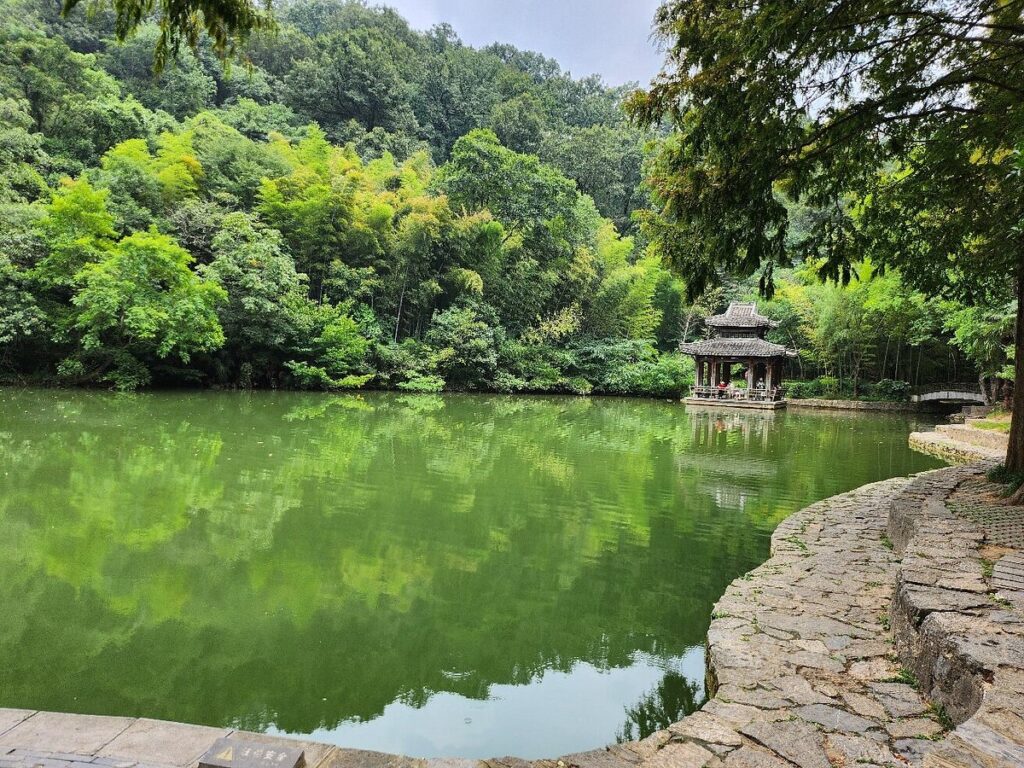
An Essential Guide to Visiting Langya Temple
Nestled within the lush landscapes of Langya Mountain, Langya Temple (琅琊寺) stands as a serene testament to China’s rich historical and cultural tapestry. This sacred site, revered for its stunning architecture and tranquil surroundings, beckons travelers from around the globe to explore its ancient halls and breathtaking views. Whether you’re a history enthusiast eager to delve into the stories of Chuzhou’s kings, a nature lover captivated by vibrant greenery and scenic vistas, or a spiritual seeker in search of tranquility, Langya Temple offers an experience that transcends mere sightseeing.
As you wander through its expansive grounds, you’ll encounter age-old pavilions, charming paths lined with trees, and the soothing sounds of nature that envelop you in a peaceful embrace. The temple is not just a place of worship; it’s a journey through time, where poetry and history intertwine, revealing the beautiful narratives of the past. With a variety of trails that lead to sweeping views of the city below, every step taken at Langya Temple is a step deeper into the soul of China. Prepare to be enchanted as you discover why this remarkable destination is a must-visit for anyone exploring the heart of Chuzhou.
In This Guide
- An Essential Guide to Visiting Langya Temple
- The Rich History and Legends of Langya Temple
- Main Highlights: What You Absolutely Can’t Miss
- Planning Your Visit: A Practical Guide
- Tickets: Prices, Booking, and Tips
- How to Get There: A Complete Transportation Guide
- Local Cuisine and Accommodation Nearby
- Frequently Asked Questions
- Final Thoughts on Your Trip
The Rich History and Legends of Langya Temple
Nestled in the serene embrace of Langya Mountain, Langya Temple (琅琊寺) stands as a testament to centuries of history and cultural significance. This revered Buddhist temple, with its origins dating back to the Tang Dynasty (618-907 AD), has witnessed the ebb and flow of time, serving as a spiritual sanctuary and a hub for scholars and poets alike.
The temple’s name, “Langya,” translates to “beautiful jade,” a fitting description for the lush landscape that surrounds it. Historically, Langya Temple was not only a place of worship but also a center for learning, where scholars gathered to exchange ideas and compose poetry. One of its most famous patrons was the renowned poet Li Bai, whose verses celebrated the temple’s breathtaking vistas and tranquil atmosphere. His poetry immortalized the temple in the annals of Chinese literature, drawing admiration from generations of visitors.
Throughout its history, Langya Temple has undergone several renovations and expansions, especially during the Ming (1368-1644) and Qing (1644-1912) dynasties. Each era left its mark, contributing to the temple’s architectural grandeur and spiritual ambiance. Today, visitors can marvel at the intricate carvings and stately halls that reflect the artistry of these periods.
Legends abound in the stories surrounding Langya Temple. One popular tale speaks of a monk who, inspired by the mountain’s beauty, meditated for years in solitude. It is said that he attained enlightenment and could communicate with the natural elements, bringing harmony to the surrounding community. This legend highlights the temple’s role as a bridge between the earthly realm and the spiritual, embodying the essence of Buddhist philosophy.
Visitors to Langya Temple are often captivated not only by its historical significance but also by the stunning views it offers of Chuzhou city and the surrounding landscape. As one ascends the mountain, the journey itself becomes a pilgrimage, filled with reflections on history, nature, and spirituality. Whether you are a history enthusiast, a nature lover, or someone seeking a moment of tranquility, Langya Temple invites you to explore its rich tapestry of legends and historical significance.
Walking through its sacred halls and gardens, one can’t help but feel a deep connection to the past, where every stone and statue tells a story, and every whisper of the wind carries the echoes of the monks who once walked these paths. Langya Temple is not just a destination; it is a journey into the heart of Chinese cultural heritage, waiting to be discovered.
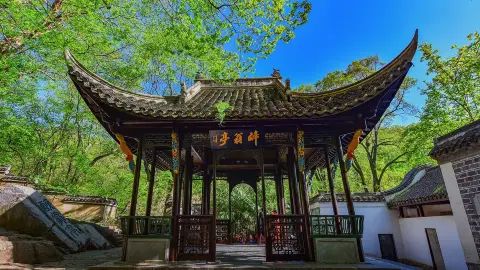
Langya Temple.
Main Highlights: What You Absolutely Can’t Miss
When visiting Langya Temple (琅琊寺), there are several highlights and experiences that you absolutely cannot miss. Nestled within the lush landscapes of Langya Mountain, this temple is not only a site of historical significance but also offers breathtaking views and a serene atmosphere. Here’s a guide to help you make the most of your visit.
1. The Majestic Temple Complex
As you ascend toward Langya Temple, you’ll encounter a series of beautifully designed pavilions and halls that showcase traditional Chinese architecture. The temple is famed for its intricate carvings and serene courtyards, making it an ideal place to immerse yourself in history and spirituality. Don’t forget to take a moment to appreciate the intricate details that reflect the artistry of ancient craftsmen.
2. Old Drunkard’s Pavilion (醉翁亭)
This iconic pavilion is not only a picturesque spot but also holds literary significance, as it is associated with a famous poem that celebrates the beauty of the mountain. It offers a tranquil setting where you can enjoy the serene surroundings and perhaps even reflect on the poetry that has resonated with visitors for centuries. The pavilion’s enclosed garden is a hidden gem, perfect for a quiet moment away from the crowds.
3. Breathtaking Views from the Summit
The climb to the top of Langya Mountain may be steep, but the panoramic views of Chuzhou city from the summit are undoubtedly worth the effort. Once at the top, you’ll be rewarded with stunning vistas that showcase the lush greenery and urban landscape below. This spot is perfect for photography enthusiasts, so be sure to have your camera ready!
4. Scenic Walking Trails
The extensive walking paths that weave through the park make for a delightful exploration of the area. The lush greenery, with towering trees and bamboo groves, provides a refreshing atmosphere. Keep an eye out for the various wildlife that inhabit the area, as the sounds of chirping birds add to the park’s charm. Whether you take the steeper, more direct route or the gentler path, you’ll encounter natural beauty at every turn.
5. Cultural Significance
Langya Temple is not just a site of spiritual significance; it’s also a place steeped in history. The temple has witnessed many pivotal moments in the region’s past and is a testament to the cultural heritage of Chuzhou. Take time to read about its history and the famous figures associated with it, which will deepen your appreciation for the site.
6. Relax by the Ponds
After exploring the temple and the mountain, take a leisurely stroll to the man-made ponds located within the park. You can enjoy a relaxing moment by the water, and if you’re inclined, rent a paddleboat for a serene ride. This is a great way to unwind and take in the surrounding beauty while enjoying a peaceful afternoon.
7. Local Snacks and Traditional Tea
Before you leave, don’t miss the opportunity to sample some local snacks and traditional tea available from nearby vendors. These treats offer a taste of the region’s culinary delights and are perfect for replenishing your energy after a day of exploration.
Conclusion
A visit to Langya Temple is a rich blend of culture, history, and natural beauty. Whether you’re drawn by the allure of the temple complex, the scenic trails, or the historical significance, Langya offers an unforgettable experience for all travelers. Make sure to allocate enough time to fully explore and appreciate this enchanting destination!
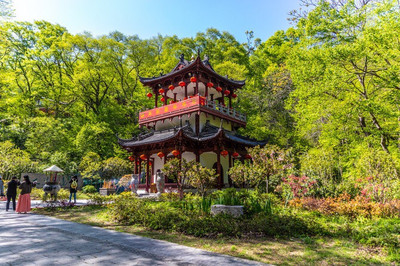
Langya Temple.
Planning Your Visit: A Practical Guide
Planning Your Visit to Langya Temple
Langya Temple, nestled within the breathtaking Langya Mountain area in Chuzhou, China, is a destination steeped in history and natural beauty. Whether you’re a history enthusiast, a nature lover, or simply seeking a serene escape, this temple offers a unique experience. Here’s a practical guide to help you plan your visit effectively.
Getting There
Location: Langya Temple is located within Langyashan Forest Park, Langya District, Chuzhou, 239001, China.
Transportation:
– By Air: The nearest major airport is Nanjing Lukou International Airport, approximately 2 hours away by car.
– By Train: Chuzhou Railway Station is the closest station, with frequent services from major cities like Nanjing and Shanghai.
– By Car: Renting a car or taking a taxi from Chuzhou city center is a convenient option, as the park is easily accessible and well-signposted.
Opening Hours
Langya Temple is open daily from 5:30 AM to 8:30 PM. To make the most of your visit, try arriving early to enjoy the tranquility of the temple grounds before the crowds arrive.
Admission Fees
- Entrance Fee: Tickets cost 80 yuan (approximately $12 USD).
- Cart Service: For those who prefer a leisurely ascent, a cart service is available for 20 yuan. This is particularly useful if you’re traveling with elderly companions or want to conserve your energy for the walk back down.
What to Expect
Scenic Beauty: The temple is surrounded by lush greenery, making it a perfect spot for nature walks. The views from the top provide a stunning panorama of Chuzhou city, especially from the final station of the ascent.
Historical Significance: Langya Temple is not just a religious site; it’s also rich in historical context related to the kings of Chuzhou. Take your time to explore the various pavilions that pay homage to this history.
Walking Paths: Be prepared for a bit of exercise! The paths are well-maintained but can be steep. Good walking shoes are recommended. If you’re up for a challenge, you can take the steeper, more direct path or choose the longer, gentler route.
Amenities: The park provides electric vehicle (EV) facilities for those needing assistance. There are also food stalls selling snacks and traditional teas, so you can take a break and enjoy the local flavors.
Best Time to Visit
The ideal time to visit Langya Temple is during the spring and autumn months when the weather is mild, and the landscape is particularly beautiful. Sunny days are preferable to fully appreciate the natural surroundings and panoramic views.
Nearby Attractions
After exploring Langya Temple, consider visiting other local attractions:
– Zuiweng Pavilion (1.2 miles away): A historic site offering beautiful views.
– Shenxiu Lake (0.9 miles away): A serene water body perfect for relaxation.
– Langya Ancient Temple (1.8 miles away): Another historical religious site worth exploring.
Tips for a Memorable Visit
- Plan Your Route: Map out your visit to include both the temple and other nearby attractions to maximize your experience.
- Stay Hydrated: Bring water, especially if you plan on walking extensively.
- Capture the Moments: Don’t forget your camera! The views and architecture are stunning and worth documenting.
- Respect the Space: As a place of worship and historical significance, maintain a respectful demeanor during your visit.
Langya Temple is a treasure trove of history and nature, making it a must-visit destination in China. With careful planning, you’re sure to have a memorable experience at this remarkable site. Enjoy your journey!
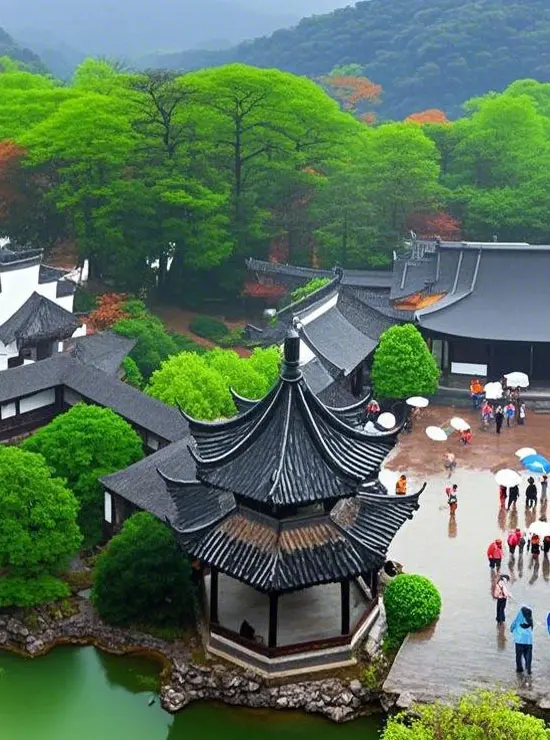
Langya Temple.
Tickets: Prices, Booking, and Tips
Visiting Langya Temple is an enriching experience that combines history, spirituality, and stunning natural beauty. To ensure you make the most of your trip, here’s everything you need to know about ticket prices, booking options, and helpful tips.
Ticket Information
- General Admission: The entrance fee to Langya Temple is 80 yuan (approximately $12 USD). This fee grants you access to the temple grounds and various attractions within the area.
- Transportation Carts: For those who prefer a more leisurely ascent, there are electric carts available for 20 yuan. These carts are particularly useful for reaching the higher points of the temple complex, such as Sōryūji and the House of Cards on the mountain, allowing you to enjoy the scenery without exhausting yourself.
Booking Options
While tickets can typically be purchased at the entrance, it’s advisable to check if there are any online booking options available closer to your travel date. This could help you avoid potential lines, especially during peak seasons or weekends when the temple attracts many visitors.
Tips for Your Visit
- Timing: The temple is open daily from 5:30 AM to 8:30 PM, so consider arriving early to enjoy the serene morning atmosphere or during the late afternoon for stunning sunset views over Chuzhou City.
- Weather Considerations: Plan your visit on a clear day to fully appreciate the panoramic vistas from the temple. Rainy weather can dampen the experience, as it may limit outdoor exploration.
- Comfortable Footwear: Wear sturdy walking shoes, as the terrain includes steep paths and many steps. The hike to the final station can be quite rewarding but requires a bit of stamina.
- Facilities: The site is equipped with facilities for visitors, including areas for rest and refreshments. Make sure to stay hydrated, especially if you’re climbing the mountain.
- Explore Nearby Attractions: Consider extending your visit to explore other nearby sites, such as the Zuiweng Pavilion and Shenxiu Lake, which offer additional cultural and natural experiences.
A trip to Langya Temple promises to be a memorable part of your journey through China, combining the tranquility of nature with the deep-rooted history of the region. Enjoy your visit!
How to Get There: A Complete Transportation Guide
Getting to Langya Temple, nestled in the picturesque Langya Mountain area of Chuzhou, can be an adventure in itself. Here’s a comprehensive guide to help you navigate your way to this historic site seamlessly.
By Air
Nearest Airport:
The closest major airport to Langya Temple is Nanjing Lukou International Airport (NKG), located approximately 150 kilometers away. From the airport, you can either take a taxi or use public transportation to reach Chuzhou.
Transportation Options from the Airport:
-
Taxi: A direct taxi ride will take around 2.5 hours, costing approximately ¥400-¥500.
-
Bus: Alternatively, you can take a shuttle bus to Nanjing South Railway Station, then transfer to a train to Chuzhou. This option is more economical, costing around ¥70 in total but may take longer depending on connections.
By Train
Chuzhou is well connected by rail, making it an accessible destination for travelers. The Chuzhou Railway Station is the primary station serving the city.
From Major Cities:
-
Nanjing: Trains from Nanjing South Railway Station to Chuzhou run frequently, with a journey time of about 30-40 minutes. Tickets cost around ¥30-¥50.
-
Shanghai: If you are traveling from Shanghai, take a high-speed train to Nanjing and then switch to a train to Chuzhou. The entire trip may take around 2.5 to 3 hours, depending on transfer times.
Local Transportation
Once you arrive in Chuzhou, getting to Langya Temple is relatively easy:
-
Taxi: Taxis are readily available and can take you directly to Langya Temple. The fare should be around ¥20-¥30 from the city center.
-
Public Bus: If you’re looking for a budget-friendly option, take Bus 1 or Bus 5, which has stops near Langya Mountain. Be sure to check the bus schedule for the latest timings.
-
Car Rentals: For those who prefer to explore at their own pace, consider renting a car. Several rental services are available at Chuzhou Railway Station and around the city.
On Foot
Once at Langya Mountain, prepare for a bit of hiking! The temple is situated on the mountain, and visitors often choose to walk the scenic paths that lead to the temple. Note that there are both steep and gentle trails available, so choose according to your comfort level.
Entry Fees:
The entrance ticket to Langya Temple is approximately ¥80, with an additional ¥20 for a cart ride up the mountain, which can be a good option for those who want to save energy for exploring the area.
Accessibility Tips
For those with mobility concerns, the area is equipped with electric vehicle (EV) facilities, providing options for easier access to the temple. However, be prepared for some steps, especially if you choose to explore the upper levels of the temple complex.
Final Thoughts
Langya Temple is a magnificent destination steeped in history and natural beauty. Whether you arrive by air, train, or car, the journey to this serene site is worth every moment. Don’t forget to wear comfortable shoes and bring along a camera to capture the stunning views from the top!
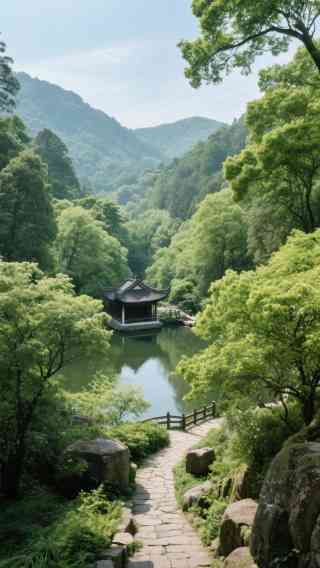
Langya Temple.
Local Cuisine and Accommodation Nearby
When visiting the serene Langya Temple, you’ll not only be enchanted by the rich history and stunning scenery but also by the delightful local cuisine and convenient accommodations nearby. Here’s a guide to help you savor the flavors of Chuzhou and find a comfortable place to rest after a day of exploration.
Local Cuisine
- Yu JiaZhuang (余家庄)
- Cuisine Type: Traditional Chinese, Anhui
- Distance: Approximately 1.6 miles from Langya Temple
-
Description: Known for its authentic Anhui dishes, this restaurant offers a cozy atmosphere where you can indulge in local specialties. Try their signature stews and handmade noodles for a true taste of the region.
-
Xian Yu ChuanQi (鲜鱼传奇)
- Cuisine Type: Seafood
- Distance: About 1.4 miles away
-
Description: If you’re a seafood lover, this spot is a must-visit. Fresh fish dishes prepared with regional herbs and spices make for a flavorful dining experience. Their fish hot pot is particularly popular!
-
GangHui Dou Lao (港汇豆捞)
- Cuisine Type: Hot Pot
- Distance: Just 250 feet from the temple
-
Description: Perfect for a casual dining experience, this hot pot restaurant allows you to cook a variety of ingredients at your table. It’s a fun and interactive way to enjoy a meal with friends or family.
-
Pizza Hut (ChuZhou XinBai)
- Cuisine Type: Italian
- Distance: Approximately 1.5 miles from the temple
- Description: For those craving a taste of home, this popular chain offers a variety of pizzas and Italian dishes. It’s a convenient option if you’re looking for something familiar after a day of adventuring.
Accommodation Nearby
- Langya Mountain Hotel
-
Description: Situated close to the Langya Temple, this hotel offers comfortable rooms with stunning views of the mountain. Guests appreciate the serene environment and easy access to hiking trails. It’s an excellent choice for travelers looking to immerse themselves in nature.
-
Chuzhou Grand Hotel
- Distance: About 3 miles from Langya Temple
-
Description: Offering a blend of luxury and convenience, this hotel features modern amenities, a fitness center, and an on-site restaurant serving local and international cuisine. It’s perfect for travelers who desire a comfortable stay with easy access to the city’s attractions.
-
Jinjiang Inn Chuzhou
- Distance: Approximately 2 miles away
-
Description: This budget-friendly option provides clean and cozy accommodations. The hotel is known for its hospitable staff and convenient location, making it a practical choice for both short and extended stays.
-
Hanting Hotel Chuzhou
- Distance: About 1.8 miles from the temple
- Description: A reliable budget option, Hanting Hotel offers simple yet comfortable rooms at an affordable rate. Its strategic location makes it an ideal base for exploring both Langya Temple and the surrounding areas.
Whether you’re indulging in the local flavors or unwinding in a cozy hotel, your visit to Langya Temple will be enriched by the culinary delights and comfortable accommodations that Chuzhou has to offer. Enjoy your journey!
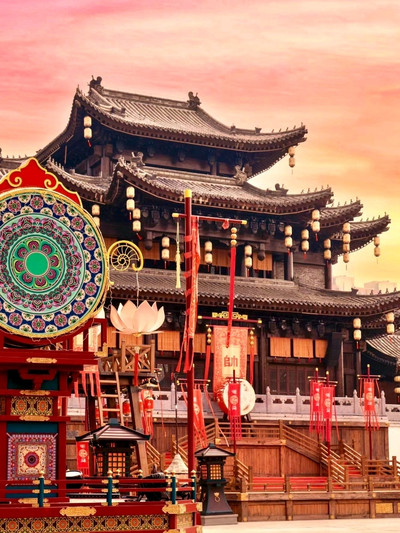
Langya Temple.
Frequently Asked Questions
Frequently Asked Questions About Langya Temple (琅琊寺)
-
What are the opening hours for Langya Temple?
Langya Temple is open daily from 5:30 AM to 8:30 PM. It’s best to arrive early in the morning to enjoy a peaceful visit before the crowds arrive. -
How much does it cost to enter Langya Temple?
The entry ticket to Langya Temple is priced at 80 yuan. Additionally, if you prefer not to walk, you can hire a cart to take you around the park for 20 yuan. -
Is there transportation available within the temple area?
Yes, electric carts are available for hire to help visitors navigate the expansive grounds of Langya Temple, especially if you’re looking to reach specific areas like Sōryūji or the House of Cards without extensive walking. -
What should I wear when visiting Langya Temple?
Comfortable walking shoes are highly recommended as there are many steps and trails to explore. Dress in layers, as the weather can change, and consider bringing a light jacket for cooler mornings or evenings. -
Are there any facilities for elderly or disabled visitors?
Yes, Langya Temple provides facilities for elderly visitors and those with disabilities, including electric vehicle services and accessible paths. However, be prepared for some steep areas that may be challenging. -
What is the best time to visit Langya Temple?
The best time to visit is during spring or autumn when the weather is mild and the scenery is particularly beautiful. Weekdays are preferable to avoid crowds, especially during national holidays. -
Can I find food and drinks at Langya Temple?
Yes, there are several snack shops and tea vendors throughout the temple grounds offering local snacks and traditional teas. It’s a great way to recharge during your visit. -
What else can I do nearby Langya Temple?
Langya Temple is located within Langya Mountain Forest Park, which features several historical sites, pavilions, and scenic spots. Additionally, you can explore nearby attractions such as Zuiweng Pavilion and Shenxiu Lake, both within a short distance.
Final Thoughts on Your Trip
As your journey to Langya Temple comes to a close, take a moment to reflect on the rich tapestry of history, culture, and natural beauty that you’ve experienced. Nestled within the serene embrace of Langya Mountain, this sacred site is more than just a destination; it’s a portal to the past, echoing the tales of emperors and poets who once roamed these grounds.
Whether you meandered through the lush greenery, marveled at the intricate architecture, or simply took in the breathtaking views of Chuzhou City from the heights, every step reveals a new layer of tranquility and inspiration.
For those who cherish history and nature alike, Langya Temple is a reminder that some of life’s most profound moments can be found in the quietude of a temple bell or the rustle of leaves in the wind. As you depart, carry with you not only memories of the past but also the peace and inspiration that this remarkable place offers.
So, lace up your walking shoes, embrace the spirit of exploration, and let Langya Temple linger in your heart long after you’ve left its sacred grounds. Safe travels!